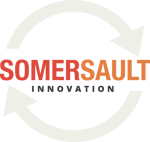In this final installment of a three-part series, Salesforce account executive Brianna Layton shares her real-life experience using design thinking methodology in sales discovery. Read part one here and part two here.
Editor’s note: We’ve removed client names and brand references from this article to respect the company’s privacy. http://tinyurl.com/z2lh6e9
I first heard about sales discovery as a selling technique when a full-day training appeared on my work calendar. Right away we had questions for our management, like “Can we have some insight into this? What does this entail? Why is this a full day? I don’t know if we have time to do this.” Our sales leadership would only say, “It’s going to be a very different training, very much worth your while. Just show up. We don’t want to tell you the concept of it because that’s what makes it so special.”
The first half of the training day with Somersault Innovation was spent out in the field. Everyone was organized into groups of two. Each partnership was given two different places to visit. My partner and I were told to go to the paint section of a home improvement store to see how customers in the store were interacting with particular brands. We were encouraged to observe things like how the salesperson was interacting with the customer and was there a place where the salesperson was gathering customer information. Our next stop was a high-end department store. We observed what the customer experience was like there and what work-arounds we saw employees doing, such as writing customer information on a paper instead of entering it into a computer system.
The second half of the day was spent back in the training room going over the sell-by-design methodology. We were taught to put ourselves in the customer's shoes and live through his or her experience. The idea is that when you then talk to customers about their business, it’s less of a scripted discovery about product and more of a customer-centric discovery. It’s focused around who they are, who they want to be, and what gaps you observed in their businesses by interacting with their brand in a unique way that most salespeople probably wouldn't take the time to do.
My big training takeaways
As a salesperson, you're trained and conditioned to reach conclusions on your own. Almost before the customer has a chance to really tell you what the issue is, you've already diagnosed it in your head. And this had been a turnoff for me. Before the sales discovery training, I wasn’t sure that I was in love with sales or if it was something I wanted to do long term. I think that was due in part to how I had observed salespeople acting or treating customers, with their objective being paramount versus what the customers’ needs were. The training really gave me validation that sales doesn’t have to follow this model.
I had been conditioned to ask the same five or six questions in every discovery and to try to prescribe a solution right away — expecting a customer's demand for our product instantly. Instead, sales discovery is about using creativity and making the experience more personal to the customer. It sounds clichéd, but it’s really about sitting back and listening, and giving customers a chance to talk and ask questions in a different way — a way that gets them thinking more broadly about what the root of their issues could be. That was definitely a gap in my personal sales methodology.
The real-life application
After we completed the sales discovery training, we were instructed to pick what we considered a greenfield account. We were told to take what we learned and apply that method of selling to that specific prospect, let the chips fall where they may, and see what the results would be. The account I chose was a major product distributor and retail company with annual revenues in the billions; this organization had never purchased from us before. Historically there hadn’t been a lot of interaction either. It was also a brand that made sense to me from a consumer perspective because I've bought its products before, so I had a high-level understanding of what it does.
I took the time over the course of two or three weeks to interact with the brand every place I thought a customer potentially would in his or her journey. I went online and signed up for its rewards program. I took a survey and looked at purchasing different things from the website. I actually tweeted to the company’s handle to tell it I was going to be visiting one of its stores that weekend and was looking for a gift for my nephew, asking if anyone had any recommendations — just to see if anyone was listening and, equally as important, if they were, would they respond.
Throughout each brand interaction, I took screenshots of my experience. Each picture would serve as evidence in my presentation back to the customer. For example, when the company responded to my tweet, I took a picture of that page to show the company and say, “I sent this at 10 o’clock this morning; you guys responded by 3 p.m. with a specific product recommendation that was super timely, and it was a great experience.” I also downloaded one of six mobile apps the company offered and entered in all of my information. That was a less-than-pleasant experience. And then I went into a physical store and purchased a product, tried to use the mobile app, and it continued to fall short.
I then put my insights together in a slideshow to present to the company’s executive team. My role in the meeting was to tell them the story of my journey with their brand. During a previous discovery call, my business development representative had identified that one of the company’s major focuses for the next one to five years was the huge gap it felt it had with Millennials. This may have made my experience resonate a bit more with the executives because I gave them my perspective on what the brand meant to me as a Millennial. Maybe more importantly, I pointed out where it didn’t connect with me at all and needed improvement.
I told them about how my mom was in town the weekend I went to their store and had to document my in-store experience. She said, “It’s so funny that you’re doing this, because when you were little, you used to make your own version of [the company’s products]. You would always draw their logo on the back. I don’t know what you thought it meant then, but it made your creations a little cooler.” In the presentation to the executive team, I started with that story because I knew that my follow-up script was going to include some tough love, and I wanted them to know that I had always cared about their brand, even when I was only five or six years old.
When I finished with my presentation, there was total silence. It was like a scene out of a movie: A very long table with 25 people sitting at it, including the CMO and CIO, all of whom were staring straight back at me. I think it took some people at the table by surprise how much research and time I’d invested prior to meeting them. After about 30 seconds that felt more like 10 minutes, I said, “Thank you very much for your time,” and went to sit down. A woman in the room said, “Oh, no, no, no. You get back up there. We have questions for you.”
They asked me questions like, “Would your experience have been better with us if there was no mobile app at all?” And I said, “Well, I’ll answer two ways. One, yes. Logically I wouldn’t have felt the pain in the store, of entering my information multiple times, only to realize the app wouldn’t read it or save it. But it is equally important for me to note that the brands I interact with the most have an amazing mobile app presence, and I use them all the time because they make it really easy to do business with them. These brands also make it effortless for me to pull up the information I need about myself when it comes to their company.”
I wasn’t up there with a sales hat on. I was up there as a customer of their brand and as a Millennial — and as someone whose opinion they wanted to hear. I wasn’t shoving product down their throat. But being able to say to them “By the way, my company has a platform that can help you with all of this,” was just a bonus. It gave us a lot of credibility and took what could have been a very small conversation and project, and broadened the scope of the opportunity tremendously.
“When I finished with my presentation, there was total silence. It was like a scene out of a movie.”
BRIANNA LAYTON | ACCOUNT EXECUTIVE, SALESFORCE






